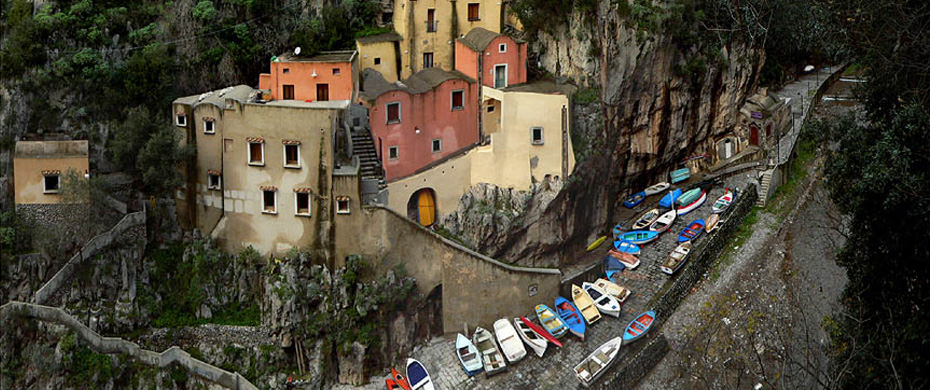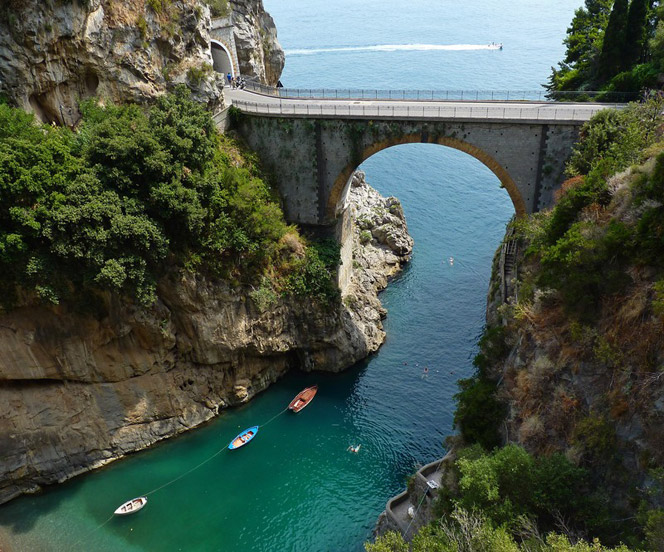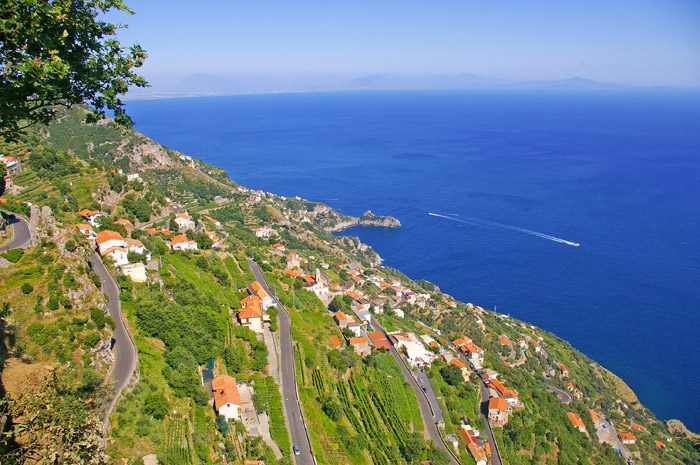A group of escaping Romans, barbarians at their backs, took refuge in these mountains, and founded the first settlements of Furore. The town has remained, thanks to its particular topology, an unassailable stronghold, even during the times of the Saracen raids. The bay makes for a natural port, where trade flourished, encouraging the growth of the burgeoning paper industry and agriculture: the waters of the Schiato river powered paper and grain mills as they descended from the Lattari mountains. Furore takes its name from the particular fury with which the sea batters the coast during storms, and from the deafening, terrifying roar of the waves against the cliffs and in the bay..
What to see
Chiese antiche
Furore has four ancient churches: San Giacomo, San Michele, Sant’Elia and Santa Maria Della Pietà, the latter once home to one of the most important and prestigious confraternities of the Diocese.
The fjord
The fjord is a deep cleft in the rock, formed originally by a stream almost always dry, the Schiato, which swoops down from the edge of the plateau of Agerola. The cliffs, the vegetation that clings in the cracks of the walls, the houses groups obtained with persistence in soil, the sound of waves crashing against the ravines of the coast, deep color of the sea have made the fjord an episode natural and anthropogenic one of great beauty.



